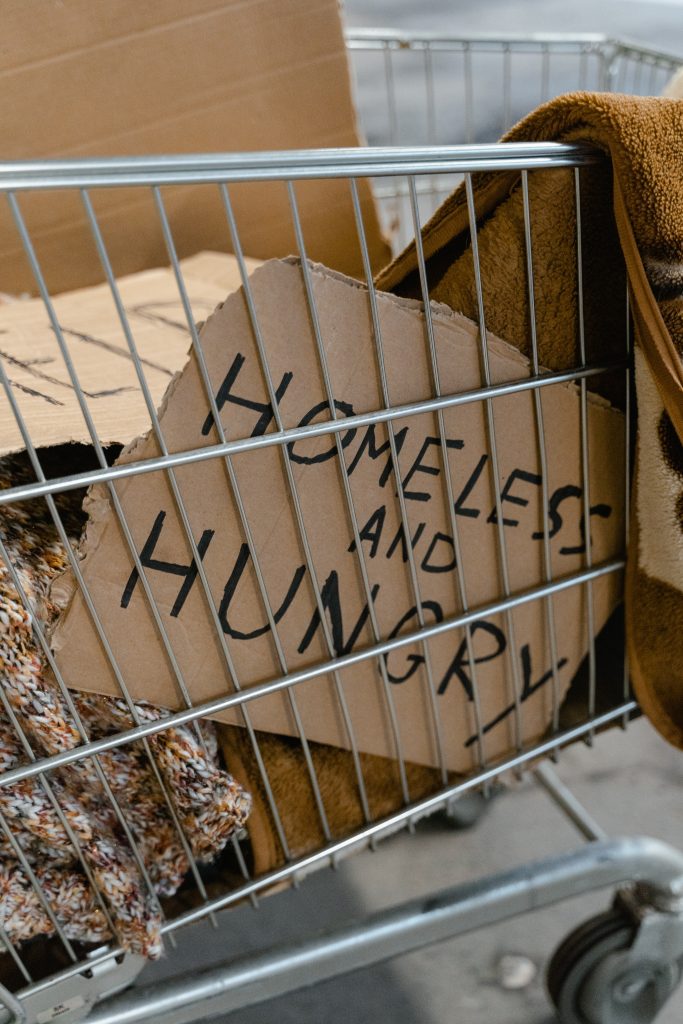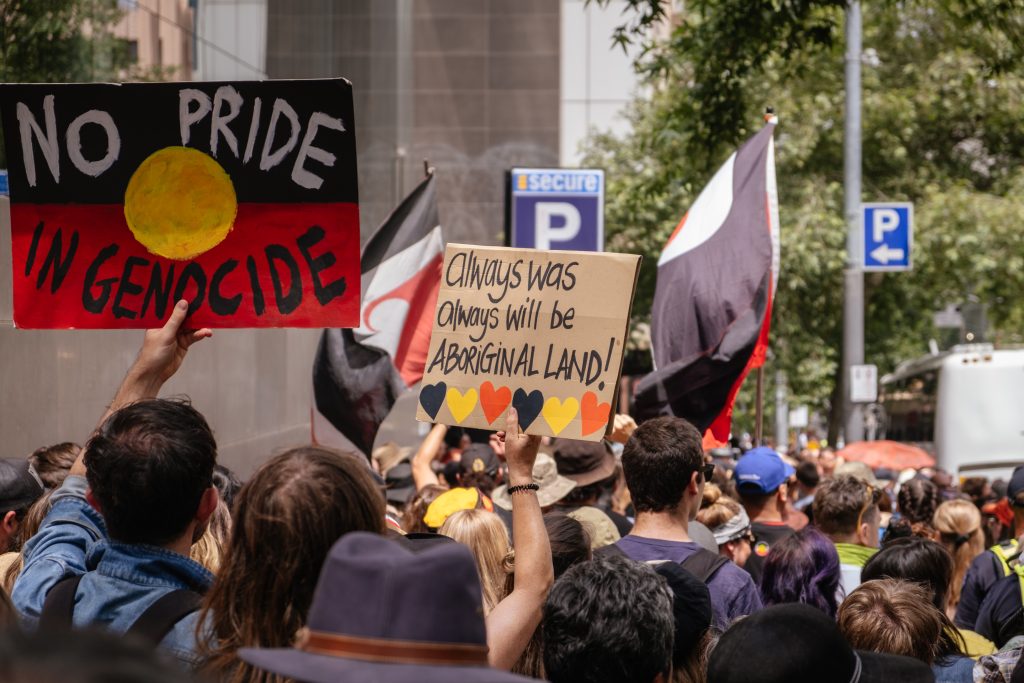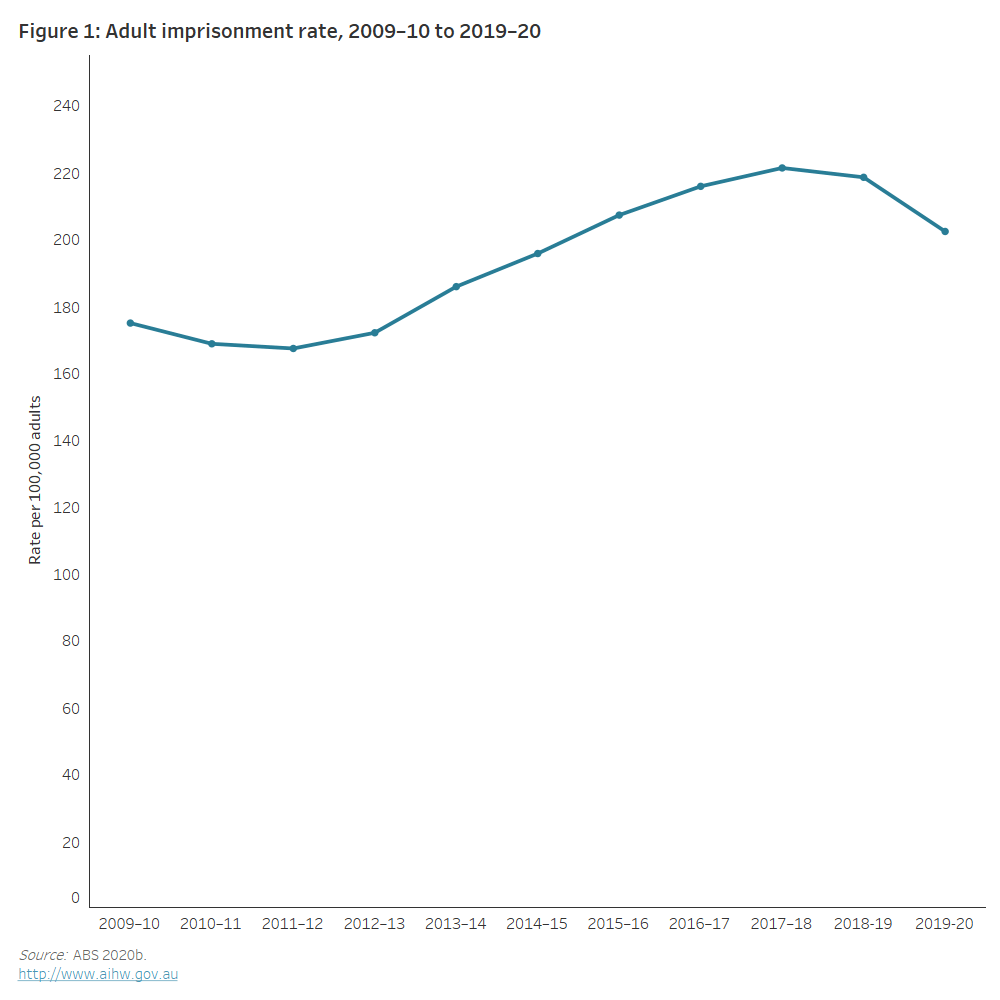Australia’s prison population is rising. Between 2010-2020, the prison population jumped from around 29,700 to just over 41,000. This means around 1 in 500 Australians are in jail. However, of those behind bars, 29% are Indigenous people. This is despite them making up around 3.3% of the general population.
The alarming numbers of Indigenous prisoners
The past 30 years have seen more Aboriginal and Torres Strait Islanders sent to prison. From 1 in 7 in 1992, to 1 in 4 as of 2020, these numbers climb higher and higher.
On top of this, over half of kids in juvenile custody have Indigenous backgrounds. In fact, they are 22 times more likely to end up in jail than other children.
Nearly a third of women prisoners are Aboriginal or Torres Strait Islander people (despite Indigenous women forming just 3% of the population). It is clear they are overrepresented in prison populations.
The worst part is that many of them tragically died in their cells. Since 1991, at least 474 Indigenous prisoners have lost their lives. This is a travesty for the Australian Government and the people who failed to protect them.
Why are Indigenous imprisonment rates so high?
There are many factors that add to their imprisonment. These can fall into two categories:
- Underlying factors.
- Structural biases / Discriminatory practices within the justice system.

Underlying factors
The impacts of Australia’s colonisation remain to this day. Our racist history includes stolen lands and broken families. Consequently, Aboriginal and Torres Strait Islander people face greater barriers to political involvement in society.
Discriminatory policies robbed many Aborigines of a chance to live happy lives and be independent economic agents. For example, up until the 1970s, Indigenous people were placed in government-run missions. Hence, they could not participate fairly in the workforce. Over 200 years of colonial oppression helped drive a huge socio-economic and health gap between Indigenous and non-Indigenous peoples.
The terrible treatment of Indigenous people by colonial governments has helped deprive many of safe and stable lives. This contributes to many issues that often influence people to commit crimes:
- Loss of engagement from school
- Unemployment
- Poor mental health
- Social exclusion due to racism
- Substance abuse
- Cognitive impairments (e.g. fetal alcohol spectrum disorder)
- Being a victim of family abuse or violence
- Substandard or inadequate housing
Structural biases and discrimination within the justice system
The above factors combine with an often-discriminatory justice system. Some of the biggest practices include:
- Mandatory sentencing: Many offences have minimum jail sentences. Usually, the idea behind these is to use harsh sentences to deter crime. However, this often fails to take into account people’s circumstances. External factors often drive people to crime. Hence, harsh sentences tend to tear people from society for longer.
- Strict bail conditions: These rarely consider peoples’ circumstances.
Courts in Australia often grant bail based on prior offences, access to housing, and having a stable job. Many lack these. Even if bail is granted, strict rules and invasive monitoring often causes arrests for the slightest breaches. Children have been arrested under these restrictions. - More arrests for minor offences: Police often can issue warnings at will.
Additionally, racist motives often drive excess use of police power in Indigenous communities. This is especially true for minor crimes.
For instance, in Queensland, one in four adults and more than 40% of children charged with public nuisance were Indigenous. Hence, Indigenous people tend to be more likely to gain unfair punishments for minor crimes than non-Indigenous people.
Parents that struggle with financial or other issues often struggle to look after their children. Children without love and support are more likely to experience these issues themselves. For families who lose someone to imprisonment, other family members are more likely to be arrested and jailed themselves.

How do we break the cycle?
Systemic issues and an unfair justice system are some of the main reasons why Indigenous people are overrepresented in Australia’s prisons. Therefore, solutions must fix their social and economic situations, and change the way they are treated in the justice system. Some solutions for this crisis include:
- Offering alternatives to school suspension e.g. mandatory community service.
- Raising the age of criminal responsibility. In Australia, children as young as 10 can be found guilty of a crime. Children locked up are often more likely to reoffend as adults.
- Giving Indigenous communities the power to police themselves. For example, allow Indigenous elders to resolve disputes and breaches of law.
- Provide greater support to Indigenous peoples accessing legal support. This is particularly helpful as many live in rural areas lacking such support.
- Increasing public funding and access to education and jobs for Indigenous people to provide a source of income.
- Organising recreation and mentoring programmes (such as sport or music) in prisons to help rehabilitate young offenders.
- Providing more resources for community corrections programs in remote and regional areas. This can give offenders supervision in their community while engaging in community service or programs to improve their lives.
- Establishing healing lodges run by Aboriginal liaison officers and cultural workers. This can provide treatment for issues that may influence them to offend (e.g. intergenerational trauma and substance abuse) in a way that caters to their culture.
- Replacing mandatory sentencing with sentences that consider offenders’ circumstances.
- Easing bail laws by removing bail conditions that limit mobility.
- Instead of allowing police to issue warnings for minor crimes at will, only allow them to issue these if they can prove they are committing a crime.

The above solutions will help Australia give equal justice to everyone.
How you can help Australia THRIVE
We at the THRIVE Project have made this blog to raise awareness for the issues that stop us from building a thrivable future. If we want a world where we can all live in harmony with nature, we have to raise awareness for the issues that matter to us.
Therefore, we would appreciate it if you could share this blog post on your social media channels and start a conversation with your friends. Or visit our website to see how else you can contribute to a better world.





















